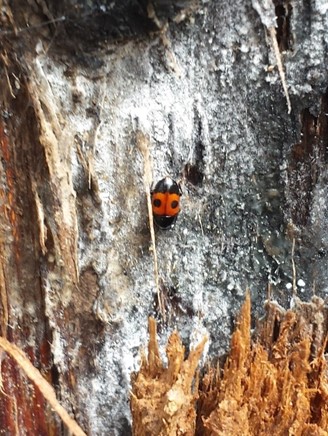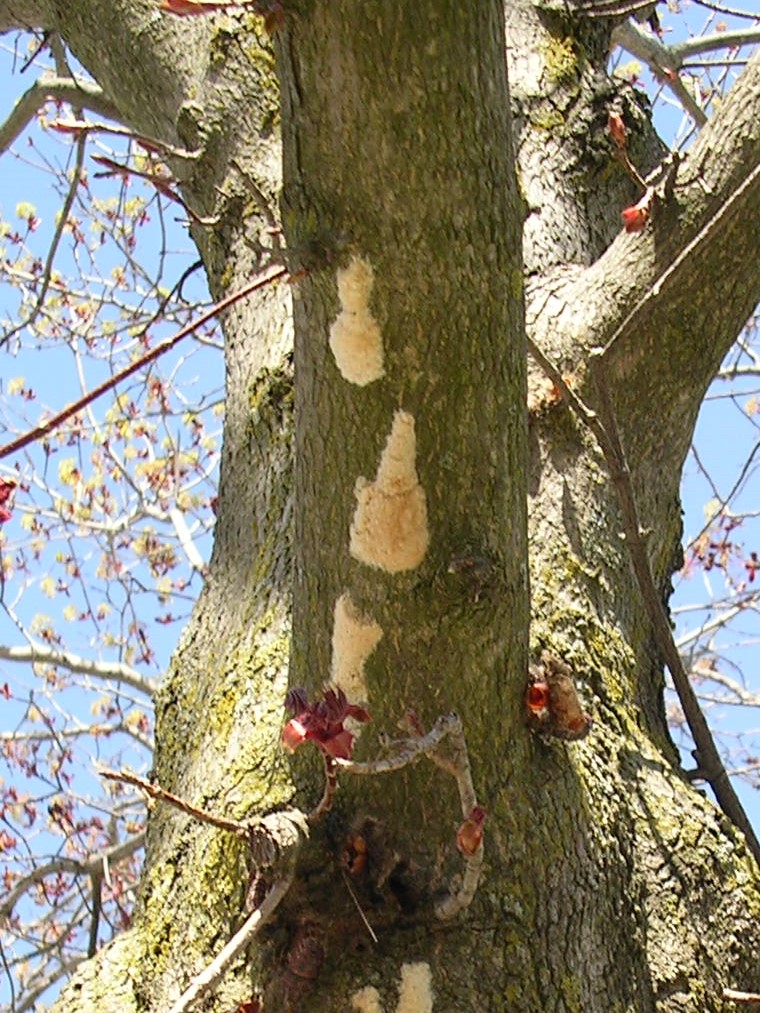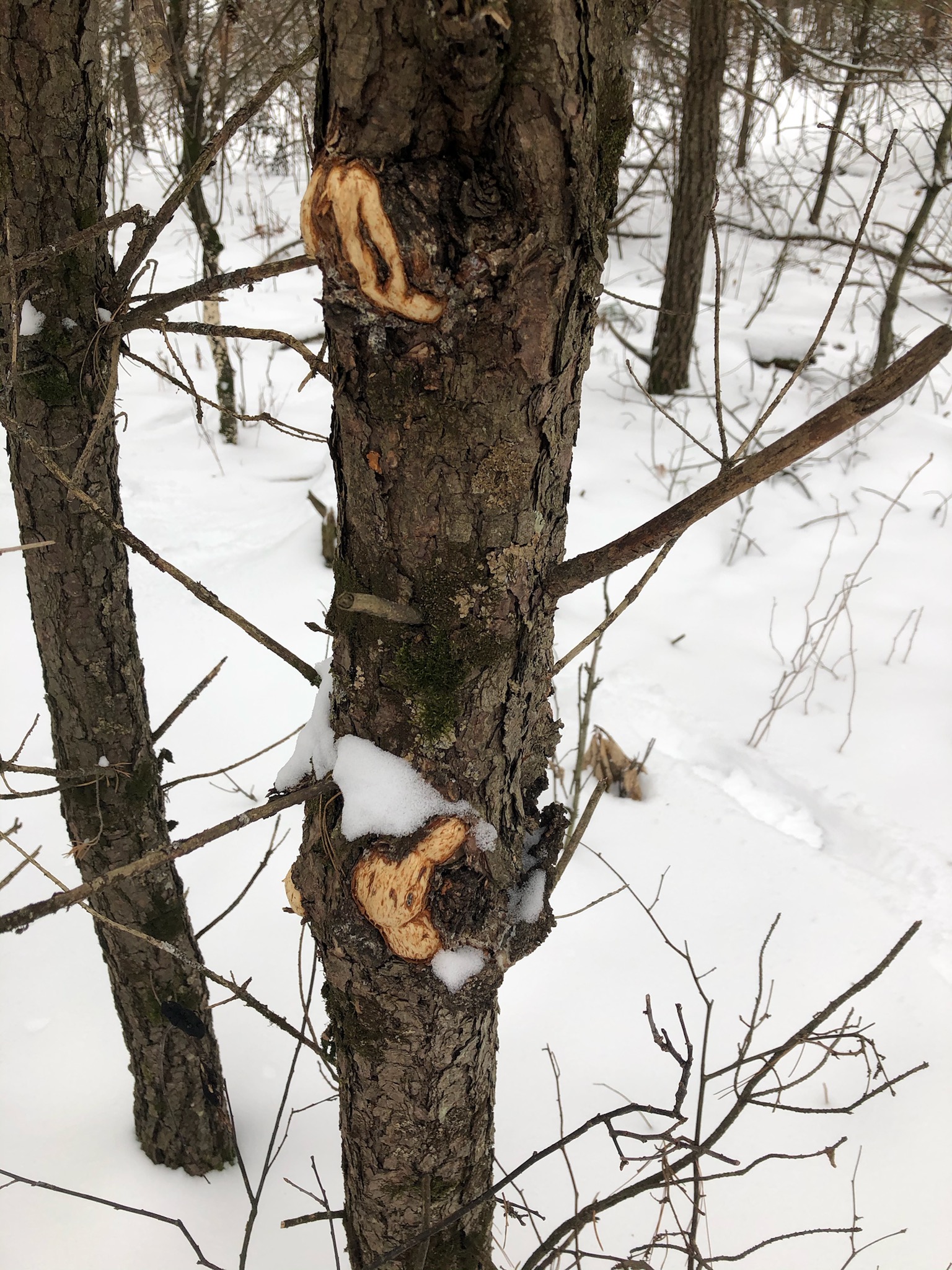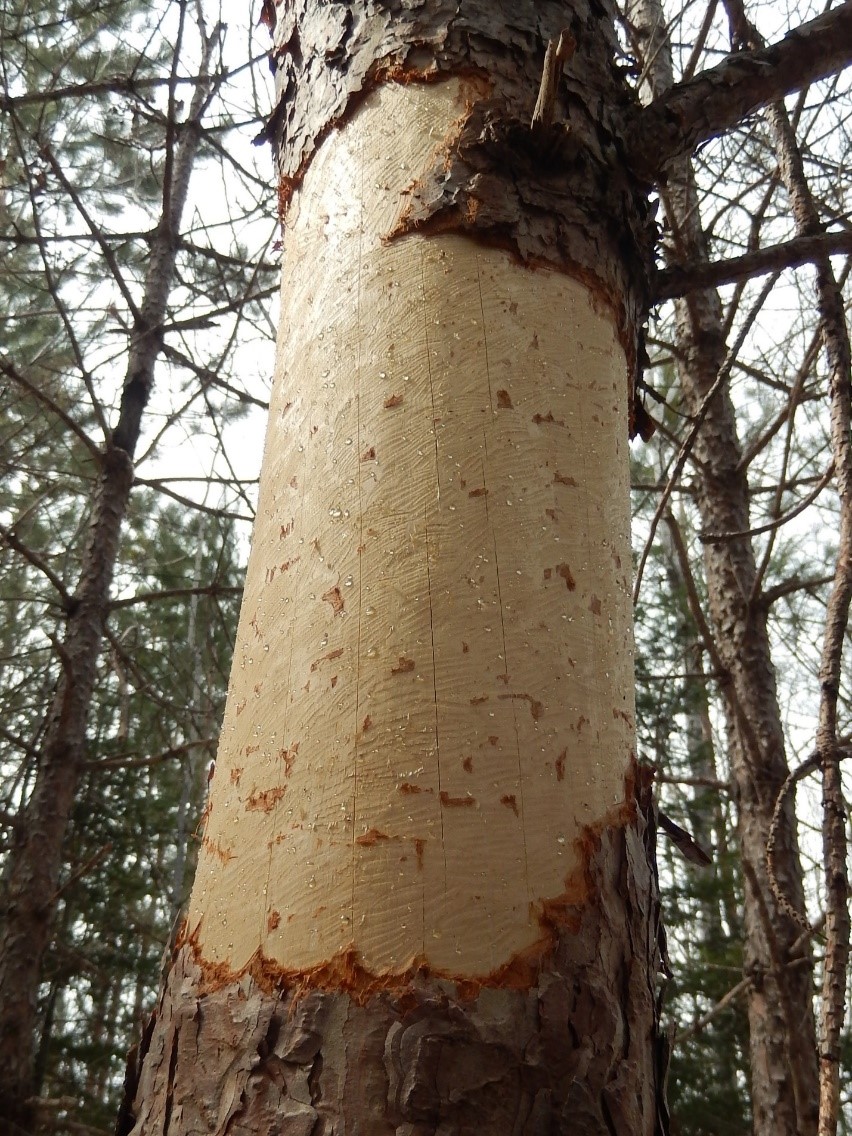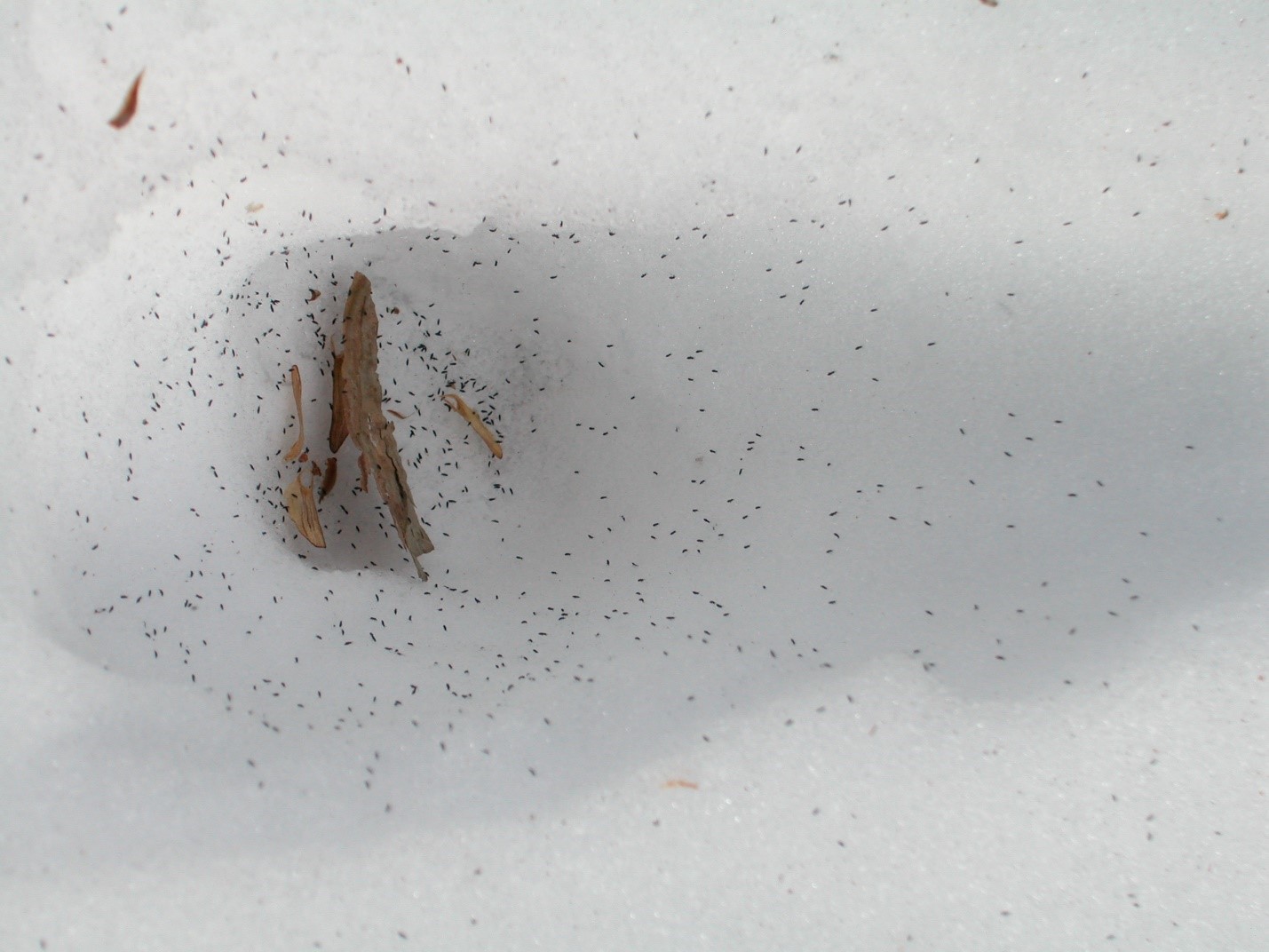Linda Williams, DNR Forest Health Specialist, Woodruff. Linda.Williams@wisconsin.gov or 920-360-0665.
Emerald ash borer (EAB) has been identified in Langlade County. Although this is the first find of EAB in Langlade County, it was found in three separate areas of the county in the towns of Ainsworth, Parrish and Wolf River. Two of these locations were within the area hit by the derecho storms in July 2019.
This was the first new county EAB detection for 2021 and is the 59th county in Wisconsin to identify the insect. There are no regulatory changes due to these detections since EAB was federally deregulated as of January 14, 2021, and Wisconsin instituted a state-wide quarantine in 2018.
Check out the interactive Wisconsin map showing which Townships and Municipalities are known to have EAB.
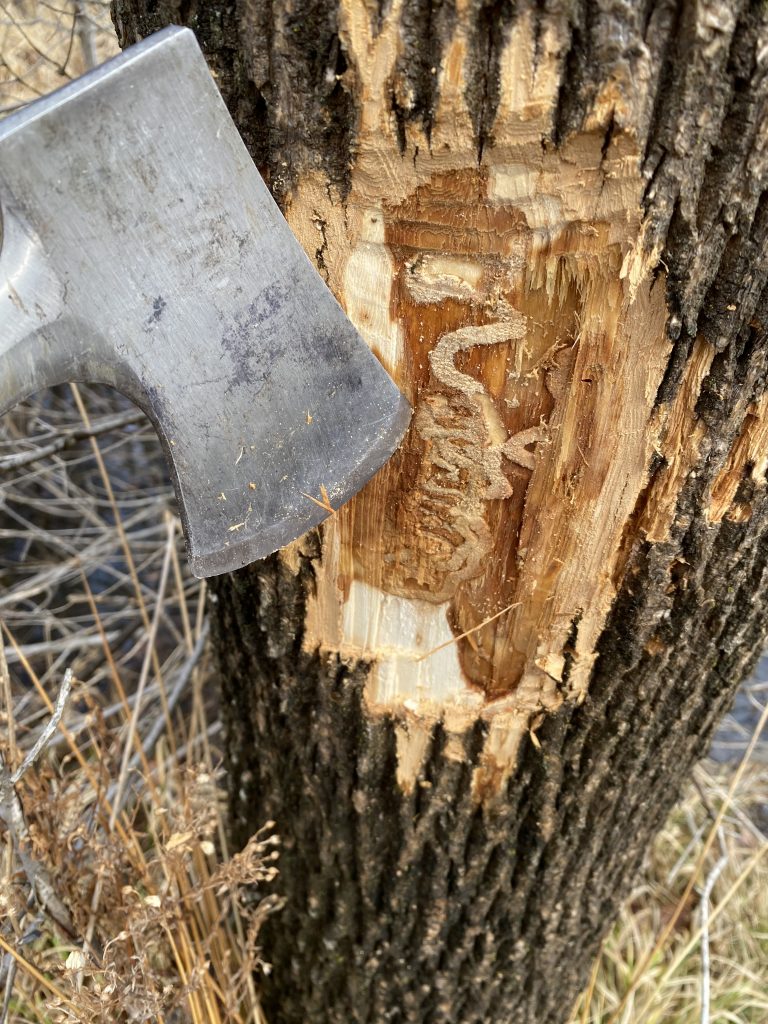
Bark removed using hatchet to show EAB larval galleries underneath.


